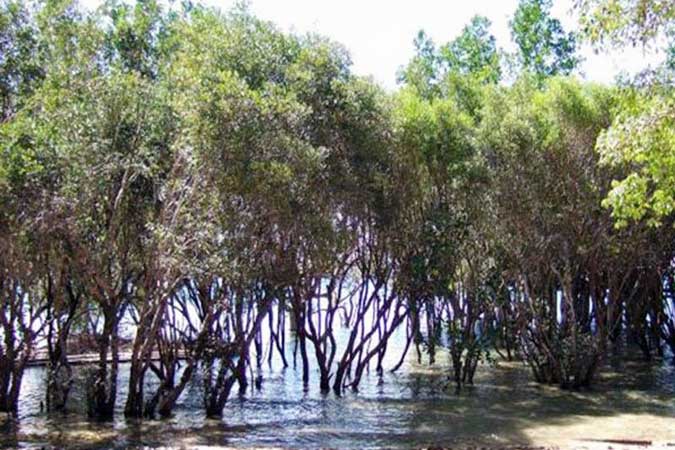MANGROVES are more beneficial to fishing communities than fish farming, which employs few workers, a marine scientist said at an online forum organized by Oceana Philippines.
Dr. Jurgenne H. Primavera said Wednesday that mangroves bring more socio-economic opportunity and protection from storms and flooding.
“With mangroves, there is social equity. Many more people will benefit, including small-scale fishers. In contrast, the fish pond industry employs very few full time workers… and seasonal (ones),” Ms. Primavera, a mangrove expert, said.
Citing a Zoological Society of London study, she said mangroves generate fishing and forestry products, benefiting small-scale fishing communities along the coast.
“Fish ponds (are for) food security,” she said, citing the intensive farming of milkfish and tilapia.
“Pero iyon lang (That is all),” she said, noting the absence of other benefits.
Ms. Primavera added that she did not foresee “any massive displacement of fishpond workers,” should fish farms be repurposed for the cultivation of mangrove forests.
The Oceana forum was examining the issue of converting fish farms back to mangrove forests.
According to Wetlands International, 71% of the wetlands in Manila Bay have been cleared and used for aquaculture. Oceana said these fish farms have since been abandoned and unutilized in recent years.
“Under the amended Fisheries Code, these should revert to the public domain for mangrove reforestation. Due to the lack of enforcement, however, these properties have remained in the possession of private entities, thus depriving us, especially the poor fisherfolk, of the benefits of having mangrove forests,” Oceana said in a media advisory.
Ms. Primavera said the ideal mangrove to fish farm ratio should be 4 to 1.
“For sustainability, no more than 20% of a given mangrove area should be converted to ponds,” she said.
Non-profit organization Forest Foundation Philippines described mangroves as important ecosystems which are crucial for mitigating climate change.
“A hectare of mangrove forests can store up to five times more carbon than most tropical forests around the world. This is, in part, due to the deep, organic rich soils in which they thrive. However, like most forest types, the areas of mangrove forest have been in decline,” the group said on its website. — Angelica Y. Yang

